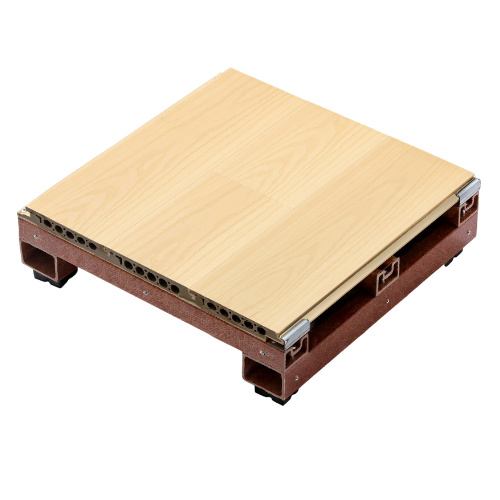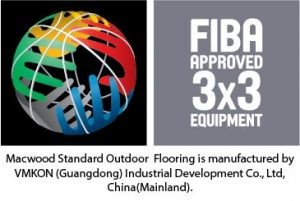Top 6 Features To Consider When Choosing A Basketball Court Floor
Basketball flooring can make a big difference to athletes' performance and the well-being of those who use it. It will help if you have a high-performance floor running a professional gym, a high school gym, or a recreational facility.
So how to choose the best basketball court floor? Will the conventional hardwood floors be better, or should we go for the revolutionary synthetic Macwood flooring?
How to decide?
Don’t worry, folks, because we’ve got answers to all these questions. Keep reading to find some important features that will help you to choose the best basketball flooring for your court. And at the end, we’ll also provide you with our expert opinion about the best flooring.
So let’s get started.
Features to Consider When Choosing A Basketball Court Floor
Multiple features must be considered before you install a basketball floor. Some are suitable indoors, while others are perfect for outdoor experiences.
Out of these, here we have compiled six features that play a major role in deciding the basketball flooring.
1. Shock Absorption
Performance is directly affected by shock absorption. It can also impact player performance on the court. Hardwood maple is the best material for your gym floor. Maple hardwood floors offer the highest shock absorption. They are great for basketball courts and other sports such as handball and racquetball.
You could argue that shock absorption is not an effective way to prevent injury. Evidence also shows that players who have more shock absorption experience less fatigue. Hardwood floors are less taxing for the player's body because they put less strain on the lower extremities.
If you want hardwood floors to absorb shocks from all types of activities, they must be consistent in their performance. You should select the appropriate material for each activity and install a high-quality subfloor to ensure constant shock absorption.
2. Vertical Deflection
Vertical deflection and shock absorption are closely linked. The higher the shock absorption level, the greater the vertical deflection. In layman's terms, vertical deflection is the floor's downward motion at the point of impact. Concrete floors have zero deflection, so a player will feel no deflection when he jumps on them. However, rubber and synthetic flooring materials have a high percentage of vertical deflection.
Maple hardwood floors offer the best performance in this situation. This is especially important for activities that require lower-extremity joint stability. Vertical deflection can improve foot stability in fast-paced, jumping sports like basketball and volleyball. Vertical deflection can cause players to become slower and less stable on the court if excessive.
3. Area Deflection
Area deflection measures energy dispersion throughout the hardwood floor and is not measured when vertical deflection occurs. It assesses the floor's ability to contain the impact area.
Maple hardwood floors with sound subfloor systems generally have a larger deflection area than other surfaces. On the other hand, synthetic sports floors have a smaller deflection area but still offer shock absorption. The specific deflections of hardwood floors are customizable and can be adjusted to suit the needs of players and coaches.
4. Friction
Surface friction is one of those performance-affecting features that have to be just perfect. Insufficient friction can cause players to slip all over the court, lose control and even endanger their health. However, excessive friction can hinder players' movement and impact their play. Basketball, for example, requires the right amount of friction.
The floor's finish is a key factor affecting surface friction. Maple hardwood floors of high performance should conform to the MFMA Standards and meet the recommended friction standards.
5. Ball Bounce
When testing the quality of a floor, it is important to measure its bounce and rebound. This aspect is also a strong point for maple hardwood floors. Hardwood floors offer ideal indoor sports conditions, unlike soft materials with lower ball bounce.
Basketball is all about how well the ball bounces. This is crucial for how the game will play and how players perform. Basketballs are used to test ball bounce performance.
The basketball bounce test is a great way to determine the performance of other balls on a court. Although rebound numbers may vary depending on shock absorption, there is a clear rule for ball bounce percentages. Maple hardwood floors should have a ball bounce of 93% or less.
6. Durability
Last but not least, the durability of basketball flooring also holds some weight when choosing the best one. And that’s where the hardwood fails. Because they are heavily affected by humidity, termite, and other external factors, hardwood floors wear out earlier than others.
When installing the basketball flooring, everyone wants it to last as long as possible. Especially if you are installing it outdoors where a lot of other factors are involved, like rainwater or ultraviolet rays.
Considering these external factors, a prevailing material that overshadows hardwood flooring in terms of durability is Macwood. It’s a synthetic wood that is waterproof, insect proof, and humidity-proof. Due to its all-weather durability, once macwood flooring is installed, it goes on for more than a decade.
Which wooden basketball floor is the best?
So keeping all these features in mind, which basketball floor is the best? It’s Macwood flooring, of course.

But why is Copo Sports Macwood flooring better than hardwood flooring?
The answer is pretty simple. While both Macwood and hardwood flooring provide excellent shock absorption and area deflection, Macwood flooring is weather resistant and stable. The maintenance cost of Macwood flooring is also minimal. It just needs regular cleaning and nothing else. And due to its waterproof and humidity-proof nature, Macwood flooring is the best suited for having an outstanding outdoor basketball experience.
On top of everything, you can also put custom logos and graphics on the surface of your Macwood flooring to grab your audience's attention.
But don’t just take our word for it. The International Basketball Federation (FIBA) has also approved this synthetic Macwood from VMKON as a Level 1 wooden flooring. And VMKON provides this Macwood basketball flooring through the brand Copo Sports.

